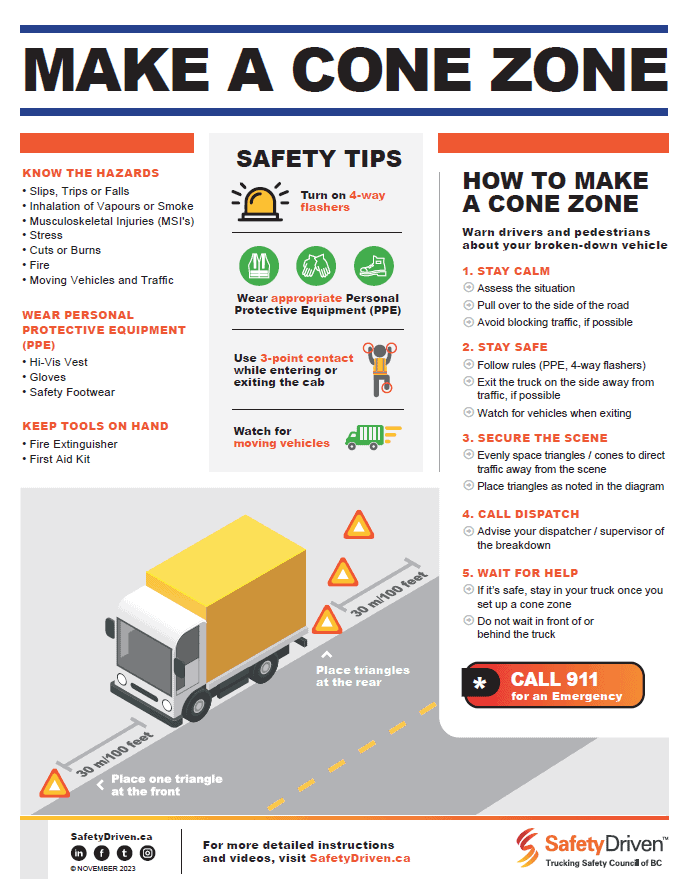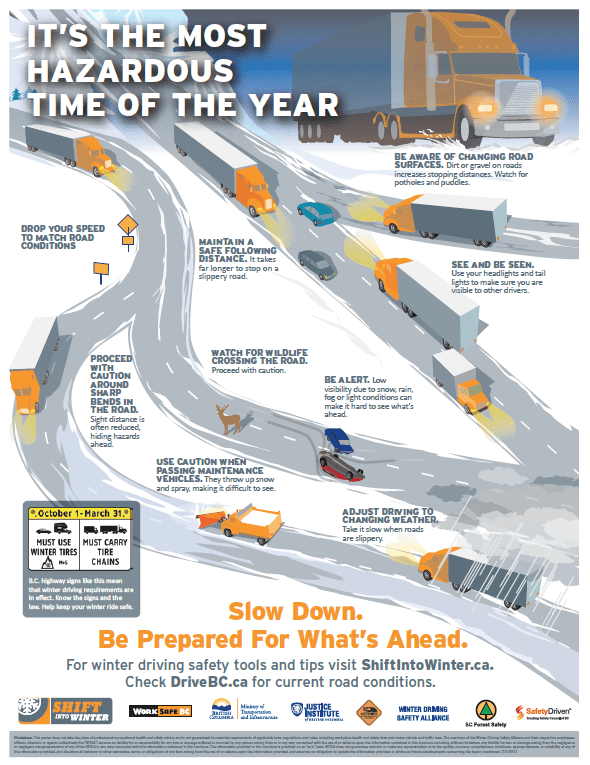
National Safety Code: Winter Driving for Commercial Drivers
The winter driving season is here and for most people, it’s a simple inconvenience. Commercial drivers, however, know that this season brings a lot of challenges and not just driving challenges. They must also follow National Safety Code requirements for hours of service.
There are some exceptions to the rule when encountering bad weather that was not predicted and the driver could not have known about prior to leaving on the trip. The driver must record in the log comments that the event was not foreseen and the driver could not have known about it ahead of time.
This is from the BC Motor Vehicle Act Regulations:
Emergencies and adverse driving conditions
37.17.03 (1)The requirements of this Part in respect of driving time, on-duty time and off-duty time do not apply to a driver who, in an emergency, requires more driving time to reach a destination that provides safety for the occupants of the commercial motor vehicle and for other users of the road or the security of the commercial motor vehicle and its load.
(2)A driver who encounters adverse driving conditions while operating the vehicle may extend the allowed 13 hours of driving time specified in sections 37.13.01 and 37.13.02 and reduce the 2 hours of daily off-duty time required by section 37.13.03 (3) by the amount of time needed to complete the trip if
(a)the driving, on-duty and elapsed time in the elected cycle is not extended more than 2 hours,
(b)the driver still takes the required 8 consecutive hours of off-duty time, and
(c)the trip could have been completed under normal driving conditions without the reduction.
(3)A driver who extends his or her driving, on-duty or elapsed time because of an emergency or adverse driving conditions must record the reason for doing so in the “Remarks” section of the daily log.
The driver must monitor his/her hours very carefully to ensure that driving does not exceed the 16-hour rule. Taking any time off during the day adds to the 16-hour rule. Once the driver has reached 16 hours, driving is not permitted. Balancing the hours can be challenging and the time that a driver is slowed down over the course of the day because of poor weather can result in the driver being over hours. The adverse weather provision can also be used for any other unexpected delays such as motor vehicle accidents that block the highway.
When a driver uses the adverse weather provision and is close to reaching the maximum number of hours permitted, the deferral cannot be used. So, no matter what, the driver can never exceed 16 hours of on-duty time.
If the driver knew about the event and still proceeded, deferral can be used but the hours deferred to the next day must be used during the anchor rest period. In other words, instead of taking 8 hours off duty, the driver must now take 10 hours off duty.
Drivers must remember to record deferrals in the comments section of the log and check off day 1 and day 2 of when using them.
Hours of service for winter driving can be challenging, but a good driver can plan and stay well within the rules of Standard 9 of the NSC and Division 37 of the BC Motor Vehicle Act Regulations.
For more information about National Safety Code training visit BC Trucking Association.
Stay up to date and sign up for one of our newsletters.
Latest Resources
Make a Cone Zone
Dowload this poster for tips on how to make a safe cone zone.Winter Hazards Poster
Drivers need to recognize winter hazards. Share this poster to remind drivers how to ...

